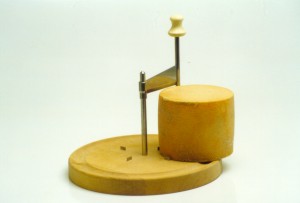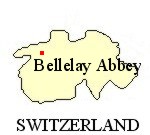
|
|
|||||
TÍte de Moine was invented by monks at Bellelay Abbey, in the Bernese Jura mountains. They later taught the local farmers how to make the cheese and its production has spread to many small dairies throughout the area of the Bernese Jura. Traditionally it was only made from summer milk and sold from when the first leaves of autumn began to fall, through until March. Nowadays it is made and sold throughout the year. Originally the cheese was called Bellelay, after the abbey, but was renamed TÍte de Moine after the French Revolution. 'TÍte de Moine' means 'monks head' and derives from the tax levied by the abbey whereby the farmers would provide one cheese for each monk during the season. Others say it refers to the tonsured appearance of the cheese when it is served in the traditional way - with the top sliced off and the rind cut away to a depth of 2cm all round. The cheese is formed into the shape of a short cylinder. It has a firm, straw yellow paste and a spicy, fruity flavour and aroma. It is matured from four to six months and receives regular brine washings which produces a red sticky rind. TÍte de Moine is often shaved using a special cutter called a 'girolle' as shown in the photograph. Shaving the cheeses releases all the aroma and flavours. Sometimes it is eaten with pepper and powdered cumin. Of course, the cheese can be enjoyed when sliced thinly on the cheese board and can also be shaved over salads and other dishes as a garnish. Each cheese is made in the shape of a short cylinder of 8cm diameter, 10cm high, weighs 900g and has a fat content of 45%. Click here or press your 'Back' button to return |
|
|||||
| All articles © www.teddingtoncheese.co.uk | ||||||
